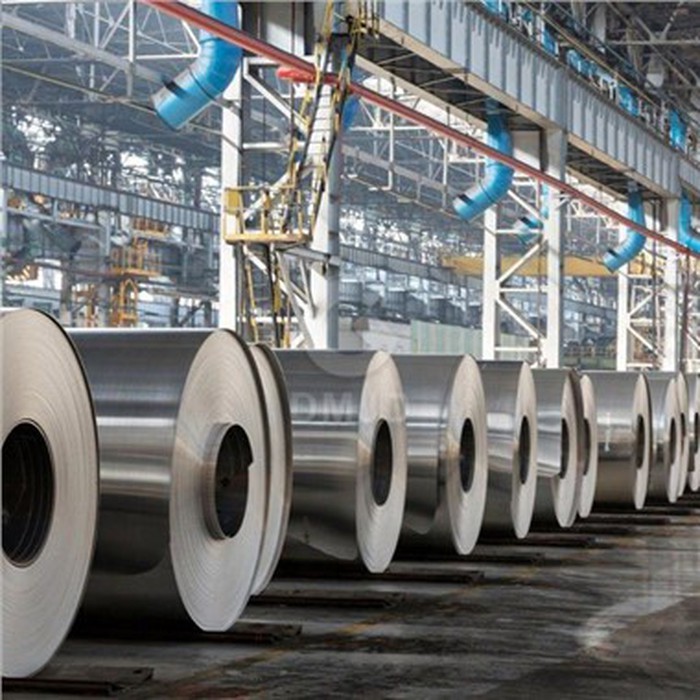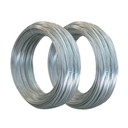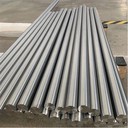Contact Us
- Xinwu District, Wuxi City, Jiangsu Province
- info@szdepu-metals.com
- +86 134 24179016
Stainless Steel Coil
Why Choose Us stainless steel?
One stop solution
Our customer team is highly skilled, motivated and always ready. No matter if you are following up on an order, looking for advice or looking for a bespoke quotation, our team is here to help.
Custom service
With our manufacturing and design capability, it allows us to not only offer standard products, but also products based on customers’ own specific designs.
High quality
As evidence of this quality, we’ve been awarded third-party accreditations including ISO 9001-2015 and EN-1090-2. These independently verify our technical expertise and confirm that we meet standards set by respected regulatory bodies.
Design
Our design engineers have more than 25 years of experience designing and building molds that offer innovative solutions to complex design challenges.
What is a stainless Steel Coil?
Stainless Steel Coils are one of the most demanded raw materials to construct buildings and manufacturing industries. In years Stainless steel coils have been widely employed in the manufacturing of anything from household appliances to industrial equipment due to their particular mechanical and physical qualities. They are sturdy, corrosion-resistant, light in weight, and need little maintenance. They are also adaptable and easily fit the requirements of a variety of design standards.
 Stainless Steel Cold Rolled Coils
Stainless Steel Cold Rolled CoilsStainless steel cold rolled coils are flat sheets of steel that have been processed through a cold
 Stainless Steel Flat Rolled Coil
Stainless Steel Flat Rolled CoilDiameter Sizes: 1/8 to 36. Thickness: Sch 5S to Sch XXS. Length: random, customized. Type: seamless
 347 Stainless Steel Sheet
347 Stainless Steel SheetDiameter Sizes: 1/8 to 36. Thickness: Sch 5S to Sch XXS. Length: random, customized. Type: seamless
 321 Stainless Steel Coil
321 Stainless Steel CoilDiameter Sizes: 1/8 to 36. Thickness: Sch 5S to Sch XXS. Length: random, customized. Type: seamless
 201 Stainless Steel Coil
201 Stainless Steel CoilDiameter Sizes: 1/8 to 36. Thickness: Sch 5S to Sch XXS. Length: random, customized. Type: seamless
 201 Cold Rolled Stainless Steel Coil
201 Cold Rolled Stainless Steel CoilDiameter Sizes: 1/8 to 36. Thickness: Sch 5S to Sch XXS. Length: random, customized. Type: seamless
 2mm Stainless Steel Coil
2mm Stainless Steel CoilMaterial: Stainless Steel (AISI 304, 316L, 430, etc.)Thickness: 0.3mm - 3.0mmWidth: 600mm -
 Stainless Steel Cold Rolled Coils
Stainless Steel Cold Rolled CoilsMaterial: Stainless Steel (AISI 304, 316L, 430, etc.)Thickness: 0.3mm - 3.0mmWidth: 600mm -
 316l Coil
316l CoilMaterial: 316L Stainless SteelThickness: 0.1mm - 3.0mmWidth: 1000mm - 1500mmCoil weight:
 304l Stainless Steel Coil
304l Stainless Steel CoilMaterial: 304-grade stainless steel. Thickness: 0.4mm-3mm. Width: 1000mm-2000mm. Surface Finish:
 Ss Coil 304
Ss Coil 304Material: 304-grade stainless steelThickness: 0.4mm-3mmWidth: 1000mm-2000mmSurface Finish: 2B, BA,
 Polished Stainless Steel Coil
Polished Stainless Steel CoilMaterial: 304 stainless steelFinish: PolishedThickness: 0.3mm-3.0mmWidth: 1000mm, 1219mm,
Benefits of stainless Steel Coil
Corrosion resistance
Stainless steel coil exhibits exceptional corrosion resistance, making it highly suitable for environments exposed to moisture, chemicals, and various weather conditions. This is attributed to the formation of a passive layer on the surface of stainless steel, primarily composed of chromium oxide. This protective layer acts as a barrier, preventing the underlying metal from coming into contact with corrosive agents.
Strength and durability
One of the remarkable characteristics of stainless steel coil is its impressive strength-to-weight ratio. Despite being lightweight, stainless steel coil exhibits excellent strength and structural integrity, enabling it to withstand heavy loads, extreme temperatures, and mechanical stresses. Its inherent strength ensures the longevity and safety of the products and structures in which it is incorporated.
Hygiene and cleanliness
Stainless steel coil is known for its hygienic properties and ease of cleaning, making it highly suitable for industries with strict cleanliness requirements. Its smooth and non-porous surface inhibits the growth of bacteria, making it a popular choice in healthcare facilities, pharmaceutical laboratories, and food processing plants.
Safe
Since they don’t contain any toxins as some other metals do, you can use one of these vape pens without worrying about inhaling any dangerous materials.Reasonably priced since they are manufactured of a sturdy substance, they will last longer than other vape pens available, allowing you to save more money over time.
Sustainability and recyclability
Stainless steel coil is an environmentally friendly material with high sustainability credentials. It is fully recyclable, meaning that it can be melted down and repurposed without any loss in its inherent properties. This recyclability contributes to the reduction of waste and the conservation of natural resources. Furthermore, stainless steel coil’s longevity and durability minimize the need for frequent replacements, resulting in fewer resources being consumed over time.
Cost effectiveness
Stainless steel coil offers long-term cost benefits due to its durability and low maintenance requirements. Stainless steel coil requires minimal maintenance, as it does not require painting or coatings to maintain its protective properties. The initial investment in stainless steel coil is often offset by the long-term cost savings, making it a cost-effective choice for industries seeking durable and low-maintenance materials.
Types of stainless Steel Coil
Hot rolled steel coil
Made from semi-finished products, these steel coils are rolled, annealed, and reduced to a certain thickness and rolled into coils. This type of steel coil is used in manufacturing pipes, steel doors and tanks and can be further processed into cold rolled steel. Hot-dip galvanised steel coils are also available with a pure zinc coating that offers economy, strength and formability. Hot-dip galvanised steel is used in building roofs, doors, windows, roller shutter doors and electric equipment.
Cold rolled steel coil
Made by ‘pickling’ hot rolled plate in a weak acid solution to remove rust, it involves cleaning, brushing, drying, oiling, uncoiling, and cold rolling. It is then wound into coils after passing it through a size reduction machine. A higher finished product cold rolled steel coils has a smoother surface, higher dimensional accuracy and bigger strength. Cold rolled steel coil finds maximum use in the automotive industry. It may be mentioned that stainless steel differs from carbon steel in its chromium and nickel content.


Carbon coil
Apart from carbon, carbon coil has small quantities of silicon, manganese, sulfur and phosphorus. It is good for second grade applications and comes in a variety of grades and thicknesses.
Galvanised coil
The process of making galvanised coil is by hot-dipping or electrolytic deposition of hot or cold rolled sheet in zinc. It helps resist corrosion and is used in the automotive industry or in roofing.
Material of stainless Steel Coil
Austenitic stainless steel
This material is the most commonly used in stainless steel coils. It is a type of steel that contains a high amount of chromium and nickel, which makes it strong and resistant to corrosion.
Ferritic stainless steel
This material contains a high amount of chromium but no nickel, making it less expensive than austenitic stainless steel. It is also less resistant to corrosion.
Duplex stainless steel
This material is a combination of both austenitic and ferritic stainless steel. It is known for its high strength and resistance to corrosion.
Martensitic stainless steel
This material is strong and hard, but less resistant to corrosion than austenitic stainless steel. It contains a high amount of carbon.
Application of stainless Steel Coil
Manufacturing
Stainless steel coil is used in various manufacturing industries to make a wide range of products, such as kitchen appliances, automotive parts, medical instruments, and construction materials.
Architecture and construction
Stainless steel coil is used to make durable and corrosion-resistant architectural and construction materials, such as roofing, siding, and structural components.
Food processing and storage
Stainless steel coil is an excellent material for food processing and storage equipment, such as tanks, vats, and conveyor belts. It is resistant to corrosion, staining, and bacteria growth, which makes it a popular choice for the food industry.
Oil and gas industry
Stainless steel coil is used in the oil and gas industry to make pipes, valves, and other equipment that can withstand high temperatures, pressures, and corrosive environments.
Transportation
Stainless steel coil is used in the transportation industry to make various components, such as exhaust systems, fuel tanks, and brake systems. It is also used in the manufacturing of aircraft and aerospace components.
Water supply industry
In the process of water pollution, its storage and transportation are more and more concerned. A large number of practices have proved that stainless steel coil preparation, storage, transportation, water purification and regeneration, such as desalination industry better choice.
Stainless Steel Coil Craftsmanship

1.Melting
2.Casting
3.Annealing
4.Hot rolling
5.Cold rolling
6.Finishing
How to maintain stainless Steel Coil
Regular cleaning
Regular cleaning of stainless steel coils to remove dust, dirt and other pollutants on the surface can maintain the beauty and corrosion resistance of the surface.
Prevent collisions
During transportation and use, stainless steel coils should be careful to avoid mechanical damage such as collisions and scratches to maintain the smoothness and integrity of their surfaces.
Prevent chemical corrosion
During use, contact with chemicals such as acids and alkalis should be avoided to avoid chemical corrosion on the surface of the steel coil.
Apply protective agent regularly
Applying a layer of protective agent on the surface of stainless steel coils can effectively prevent corrosion and pollution on the surface and extend its service life.
Polish the coils
If you want to restore the shine and luster of your stainless steel coils, you can polish them using a specialized stainless steel cleaner or polish. Apply the polish to a clean, dry microfiber cloth and massage it in a circular motion over the coils' surface. Remove any excess polish with a clean, dry microfiber towel.
Regular inspection and maintenance
Regularly check the corrosion and damage on the surface of the steel coil, and perform timely repair and replacement to avoid further damage.
What are the stainless steel raw material
Step 1
The raw material used to produce stainless steel is primarily iron ore, which is mined from the earth's crust. Iron ore is abundant and can be found in many parts of the world. Once the iron ore is extracted, it undergoes a series of physical and chemical processes to remove impurities and extract the iron content. This process is known as iron ore beneficiation.
Step 2
After the iron ore is purified, it is converted into iron through a process called smelting. Smelting involves heating the iron ore with coke (a form of carbon) in a blast furnace. The intense heat causes the iron ore to melt and react with carbon, resulting in the formation of liquid iron. At this stage, the iron is still impure and contains various impurities such as sulfur, phosphorus, and silicon.
Step 3
To remove these impurities and impart the desired properties to the iron, it is further processed in a basic oxygen furnace or an electric arc furnace. These furnaces use various agents and techniques to eliminate impurities and control the composition of the iron. The end result is a high-quality iron known as steel.
Step 4
Now comes the crucial step in making stainless steel - adding chromium. Stainless steel is primarily made by adding chromium to the steel alloy. Chromium is obtained from a mineral called chromite, which is found in abundance in certain parts of the world. The chromite ore is mined, processed, and converted into chromium metal through various chemical processes.
Step 5
Once the chromium is obtained, it is added to the molten steel in precise quantities to achieve the desired stainless steel grade. The chromium forms a protective layer on the surface of the steel, known as the passive layer. This passive layer prevents corrosion and gives stainless steel its unique corrosion resistance.
Step 6
Apart from iron and chromium, stainless steel may also contain other elements such as nickel, molybdenum, and titanium, depending on the specific requirements of the steel grade. These additional elements impart different properties to the stainless steel, such as increased strength, improved formability, or enhanced resistance to high temperatures.
How to Choose Stainless Steel Coil
Grade of Stainless Steel
Stainless steel is available in different grades, each with its unique properties and characteristics. The most commonly used grades are 304 and 316, which offer excellent corrosion resistance. Depending on the intended application, ensure you select the appropriate grade that suits your specific requirements.
Thickness and Width
The thickness and width of the stainless steel coil will determine its strength and flexibility. Thicker coils are typically more robust and suitable for heavy-duty applications, while thinner coils are more flexible and suitable for intricate designs. Additionally, consider the width of the coil based on the dimensions of your project to ensure an optimal fit.
Surface Finish
Stainless steel coils come in various surface finishes, such as mirror, brushed, or matte. The choice of surface finish depends on the desired aesthetic appeal and the application requirements. For instance, a mirror finish is ideal for decorative purposes, while a brushed finish provides a more industrial look.
Coil Coating
Coating the stainless steel coil can enhance its corrosion resistance and durability. Common coating materials include PVC, PE, and PVDF. PVC coating offers basic protection against scratches, while PE and PVDF coatings provide better resistance to chemicals, UV rays, and abrasion. Consider the environmental conditions and exposure of the coil when selecting a suitable coating.
Quality Certifications
Ensure that the stainless steel coil you choose meets the necessary quality standards and certifications. Look for certifications such as ISO 9001 and ASTM to ensure the coil has been tested and meets the required industry standards. Quality certifications ensure that the coil will perform well in its intended application.
Supplier Reputation
Choose a reputable supplier with a track record of delivering high-quality stainless steel coils. Consider factors such as their industry experience, customer reviews, and after-sales service. A reliable supplier will provide you with technical support, guidance, and assistance throughout the purchase process.
Price and Budget
While considering all the above factors, it's crucial to keep your budget in mind. Stainless steel coils can vary in price based on their grade, thickness, width, and other specifications. Set a realistic budget and compare prices from different suppliers to find the best value for your money without compromising on quality.
Our Factory
With a vast stock holding of stainless steel sheets, coils, strips, tubes, and bars, we have a wide range of products readily available to meet your immediate needs. Our comprehensive inventory ensures quick access to the materials you require.

Frequently Asked Questions stainless Steel Coil
As one of the leading stainless steel coil manufacturers and suppliers in China, we warmly welcome you to buy or wholesale cheap stainless steel coil in stock here from our factory. All customized products are with high quality and competitive price. For free sample, contact us now.





